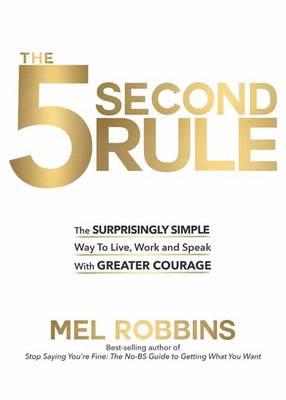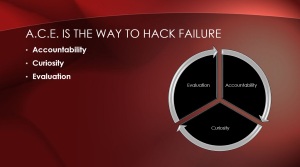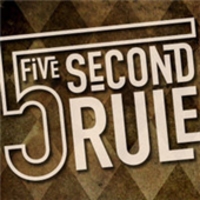I’ve been reading the 5 Second Rule by Mel Robins. You may have seen her TED talk. Coincidently I watched the TED talk and then bought the book but I didn’t make the connection between the TED talk and the author until after I bought the book. 
What is the 5 second rule?
“The moment you have an instinct to act on a goal you must count 5-4-3-2-1 and physically move or your brain will stop you.”
Pushing yourself to take simple actions creates a chain reaction in your confidence and your productivity. By pushing yourself to take the simple steps of moving your life forward, you create momentum and experience a sense of freedom and power that’s hard to accurately describe.
Start by counting backwards to yourself: 5- 4- 3- 2- 1. The counting will help you focus on the goal or commitment and distract you from the worries, thoughts, and fears in your mind. As soon as you reach “1,” move. That’s it. Anytime there’s something you know you should do, but you feel uncertain, afraid, or overwhelmed…just take control by counting backwards 5- 4- 3- 2- 1. That’ll quiet your mind. Then, move when you get to 1.
How 5 Second Rule fits into the ACE Framework?
 While reading the 5 Second Rule I saw a parallel between the mantra and the ability and need to learn from failure. The rule came about at a time In Mel Robins life in which she felt like a failure. The 5 second rule not only got her move and take positive action it also helped her learn from failure has she applied the rule.
While reading the 5 Second Rule I saw a parallel between the mantra and the ability and need to learn from failure. The rule came about at a time In Mel Robins life in which she felt like a failure. The 5 second rule not only got her move and take positive action it also helped her learn from failure has she applied the rule.
In my research for my book last year I came up with a high level framework for learning from failure:
ACE
• Accountability
• Curiosity
• Evaluation
The ACE framework is infused with concepts from authors Maxwell and Harford who both wrote best-selling books about failure.
Accountability for your failures
Avoid denial
• Accept lose and don’t chase it
• Don’t revise the effects of the failure. It matters. Don’t mislabel
Curiosity and Create a system for corrective action
• Try new things
• Experiment where failure is survivable
Evaluate and Learn from your failures
• Gather Feedback
• Remove emotions
• Don’t get too attached to your plan
• Creating Safe Spaces to Fail
• Commit only to what’s working
Hacking Failure in 5 seconds:
 I’m not sure how long it takes to do the ACE framework? It’s probably more than five seconds. However, the 5 Second Rule can help you accept accountability, become curious as to why you behave the way you behave, and then you can apply the five second rule before and after you evaluate and learn from failure.
I’m not sure how long it takes to do the ACE framework? It’s probably more than five seconds. However, the 5 Second Rule can help you accept accountability, become curious as to why you behave the way you behave, and then you can apply the five second rule before and after you evaluate and learn from failure.
Learning from failure is a reflective and metacognitive process. However, you can get stuck in that process and never truly act and learn; or learn to act. This is where the 5 second rule can help you. The rule allows you to beat your brain at its own game and distract it from the ways that it tries to sabotage you.
Along with momentum, something else keeps you moving forward: The Progress Principle. Research from the Harvard Business School has demonstrated that making progress, even in small ways, is the key to productivity and happiness.
The 5 Second Rule is a form of metacognition, which means that it’s a way of tricking your brain in order to achieve your greater goals.
If you have applied the ACE framework for learning from failure you can hack failure in 5 seconds.
By Shane Lester
If you want to learn from failure and create learning strategies for success click here to subscribe for in-depth content and special offers.
#hackingfailure

Wonderful advice, thank you so much for sharing!!
LikeLike